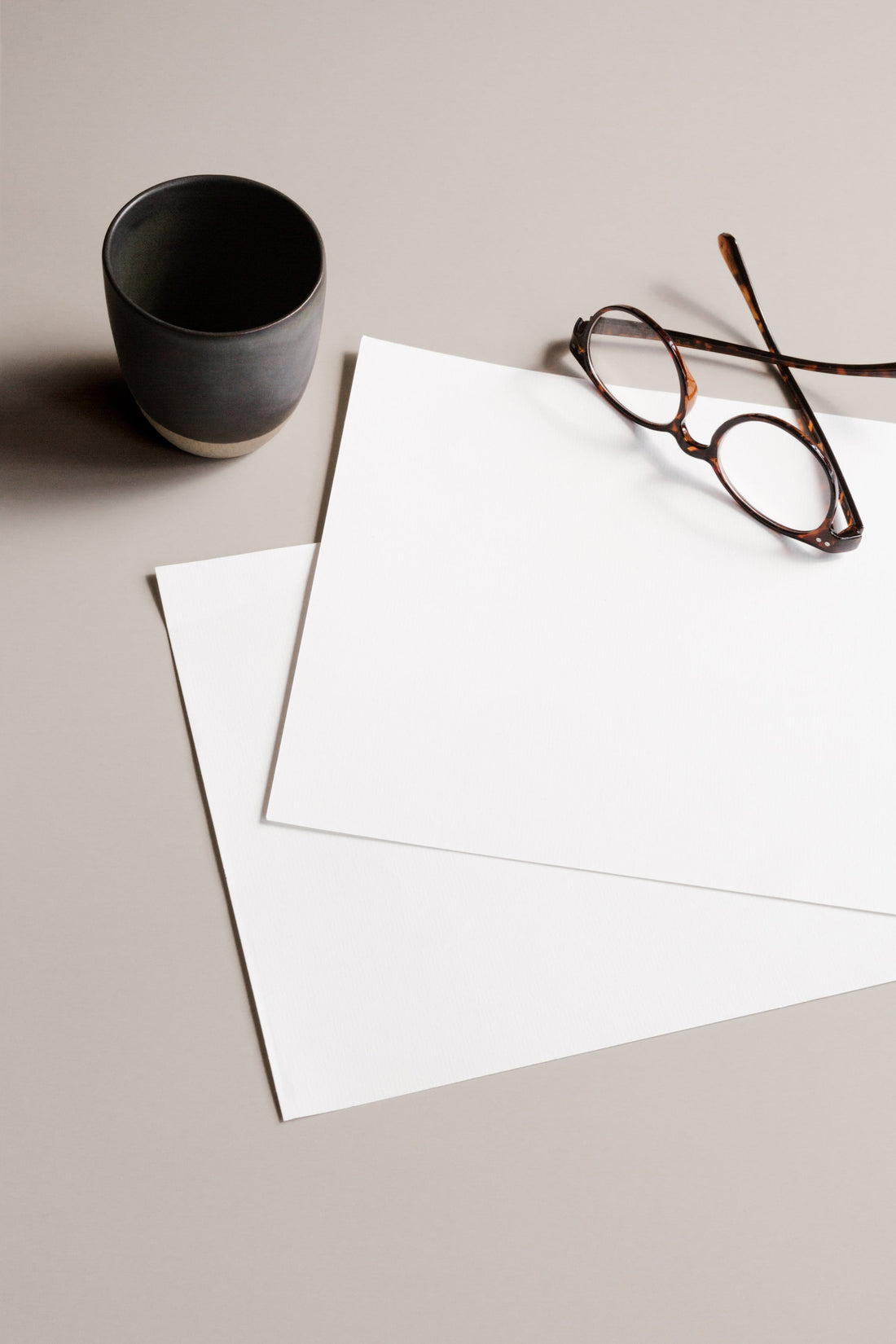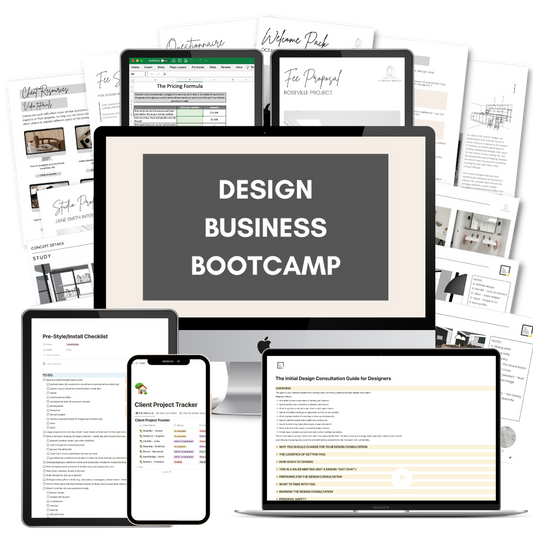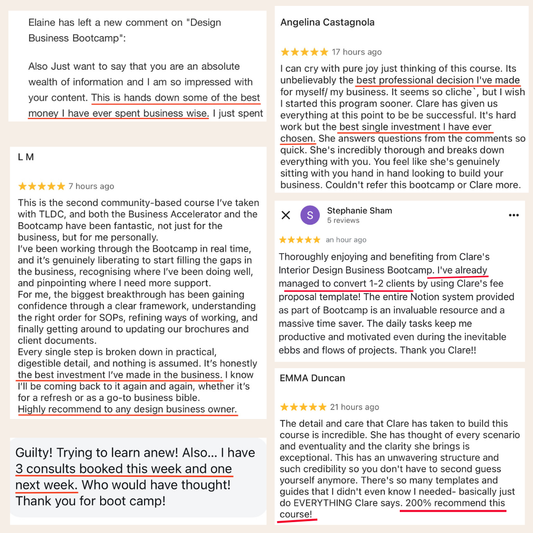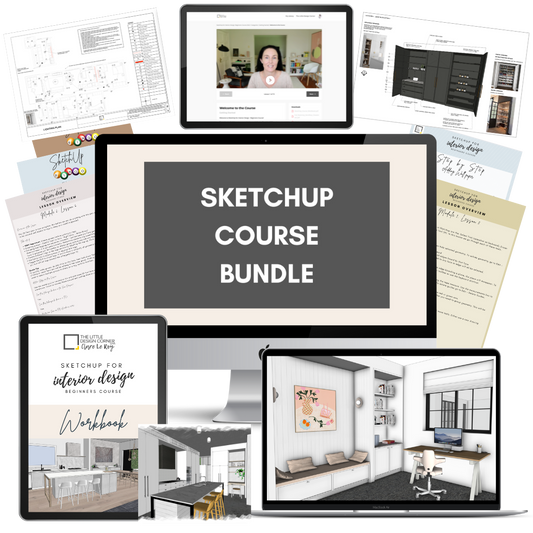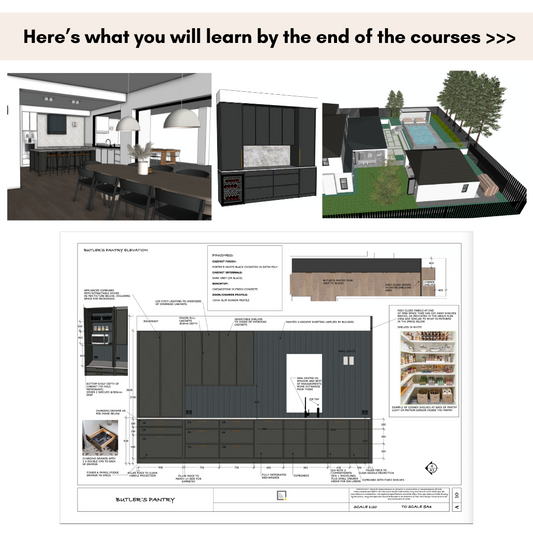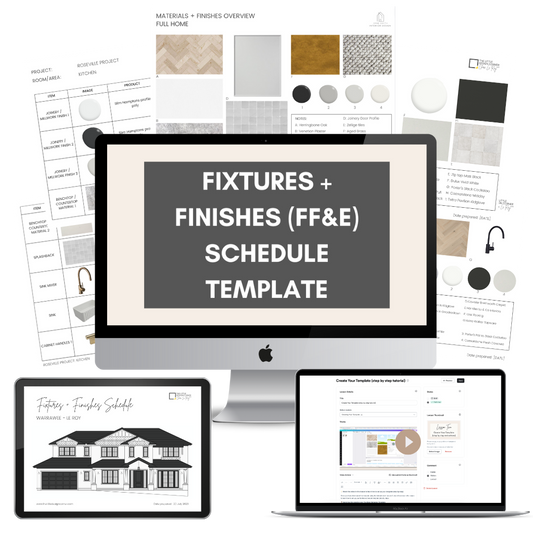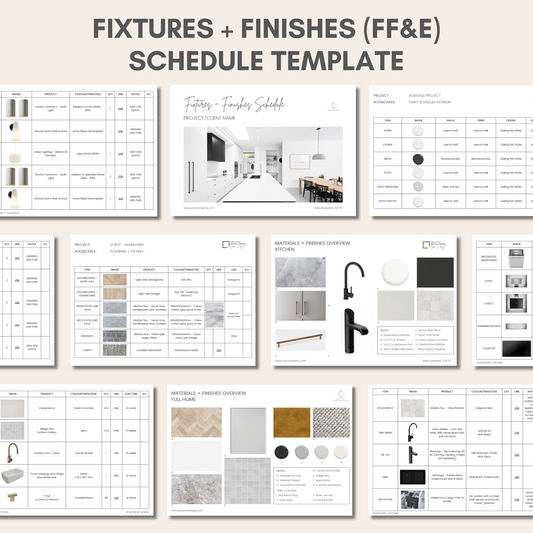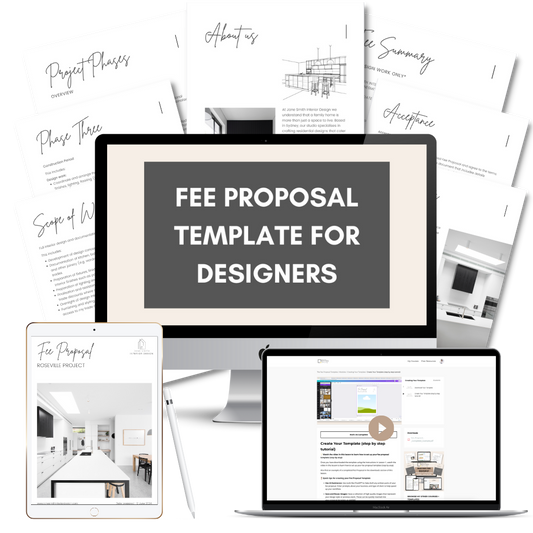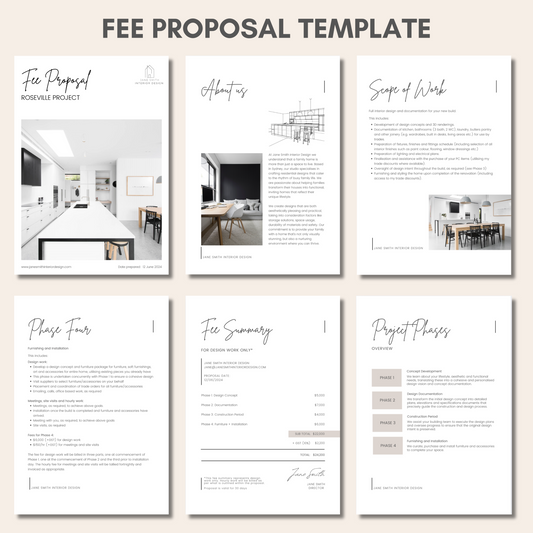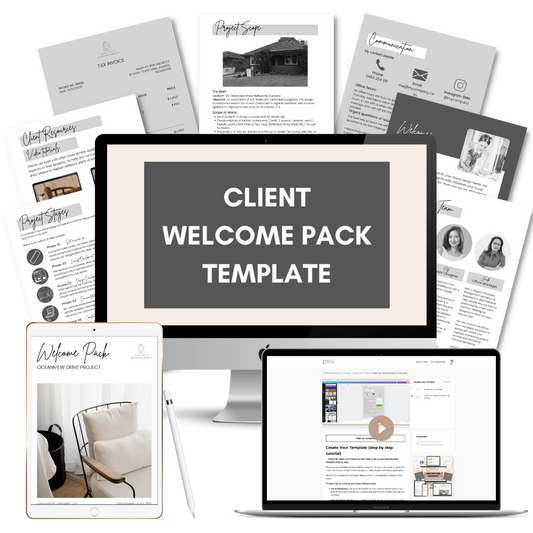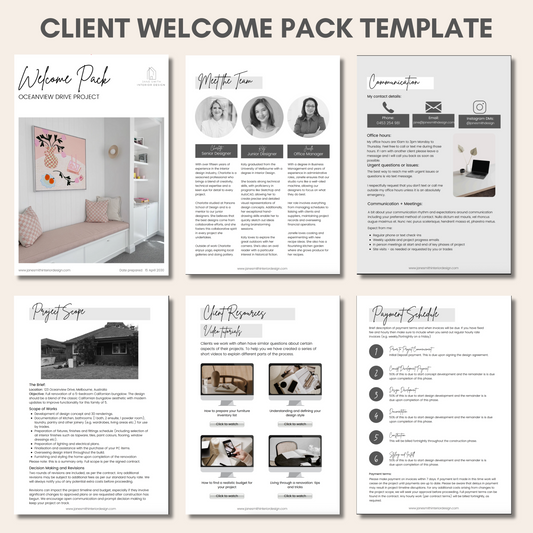I get lots of questions about how to price interior design projects like:
-
what should I include in a fee proposal?
-
how should I structure my projects?
-
how much should I charge?
And in this post I am sharing one part of the answer to these questions, which is the core components of one of my fee proposals.
Below you will find the sections I include in my fee proposals as well as some tips for how to put your own proposal together.
Tips for your fee proposals
My biggest tip about your fee proposal is to put yourself in the shoes of your client.
Ask yourself - if I were this client how would I feel when I got this document?
Would you be excited to work with you, daunted, put off, bored?
Make sure you create a proposal that is engaging and aspirational and gives a potential client lots of reasons to want to work with you.
You want to make sure you are clearly showing value and the transformation you can help them with - this stops the clients from purely focusing on how much your fees are.
Always sell the transformation!
You also want to make sure your proposal looks professional and doesn’t have errors or typos.
Any errors in the fee proposal will suggest to a client that you have a lack of attention to detail - not normally something that a client would want in an interior designer!
Below I go through the sections of a typical fee proposal for you but if you just drop a template straight in to your business and save yourself heaps of time and effort. You can get my fee proposal template here:

